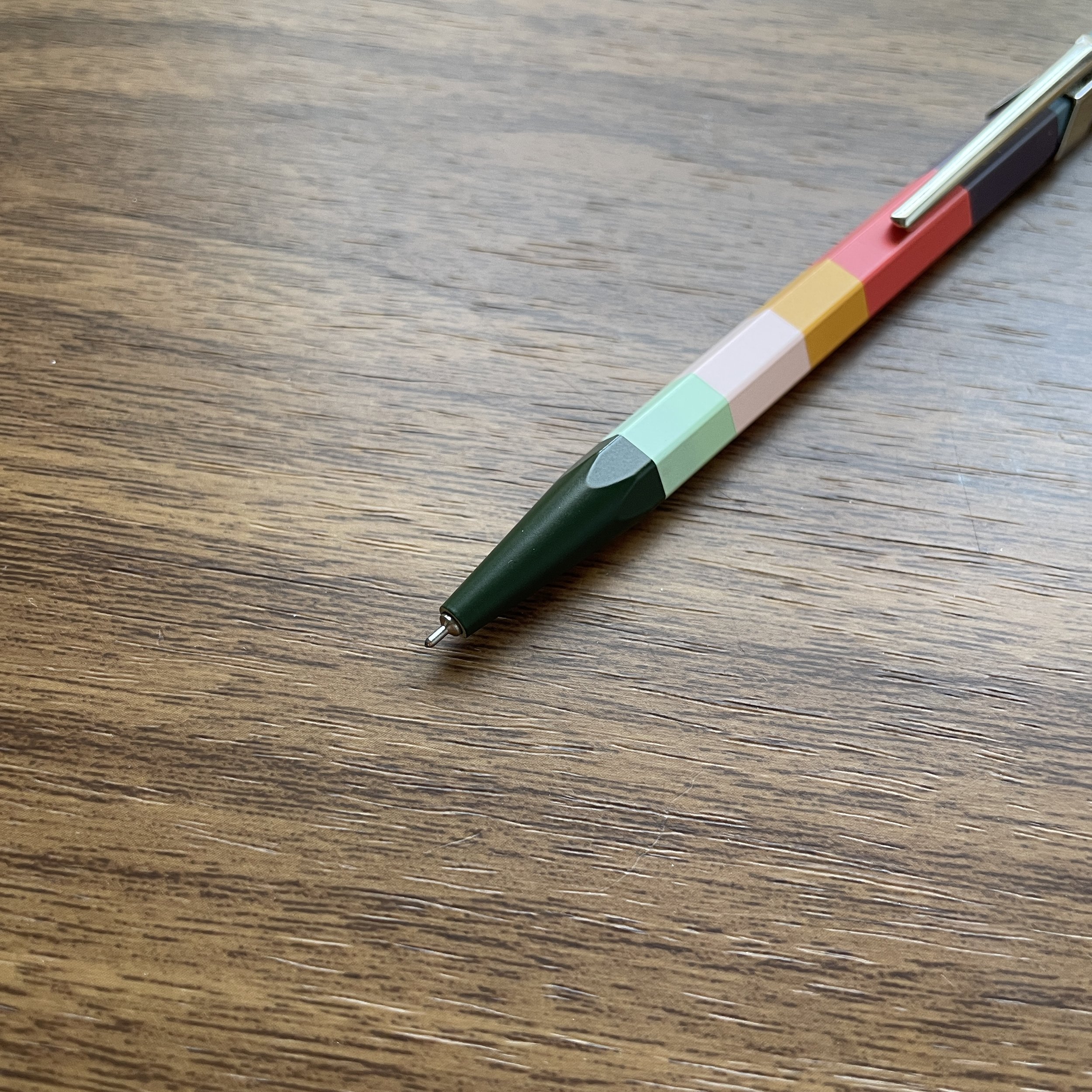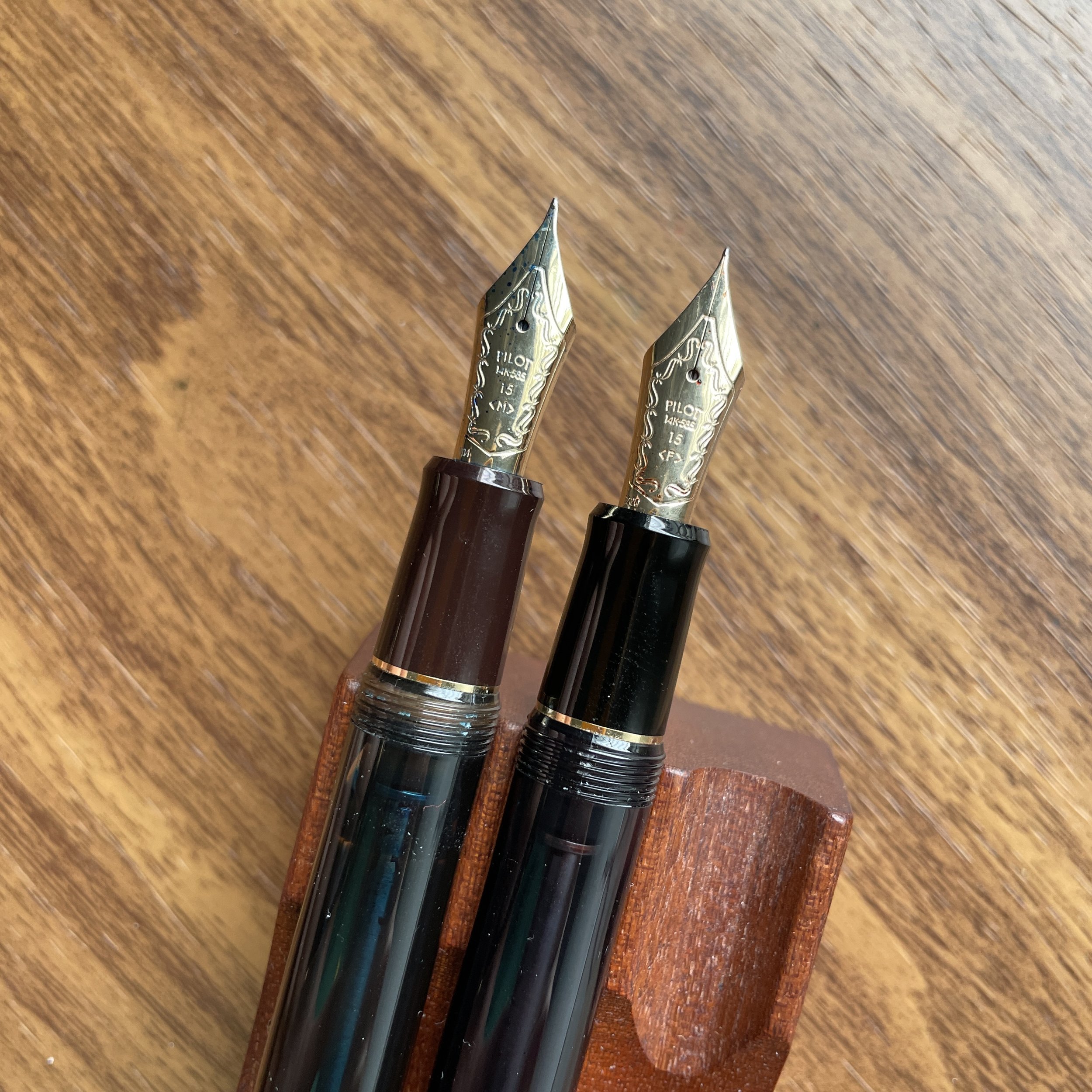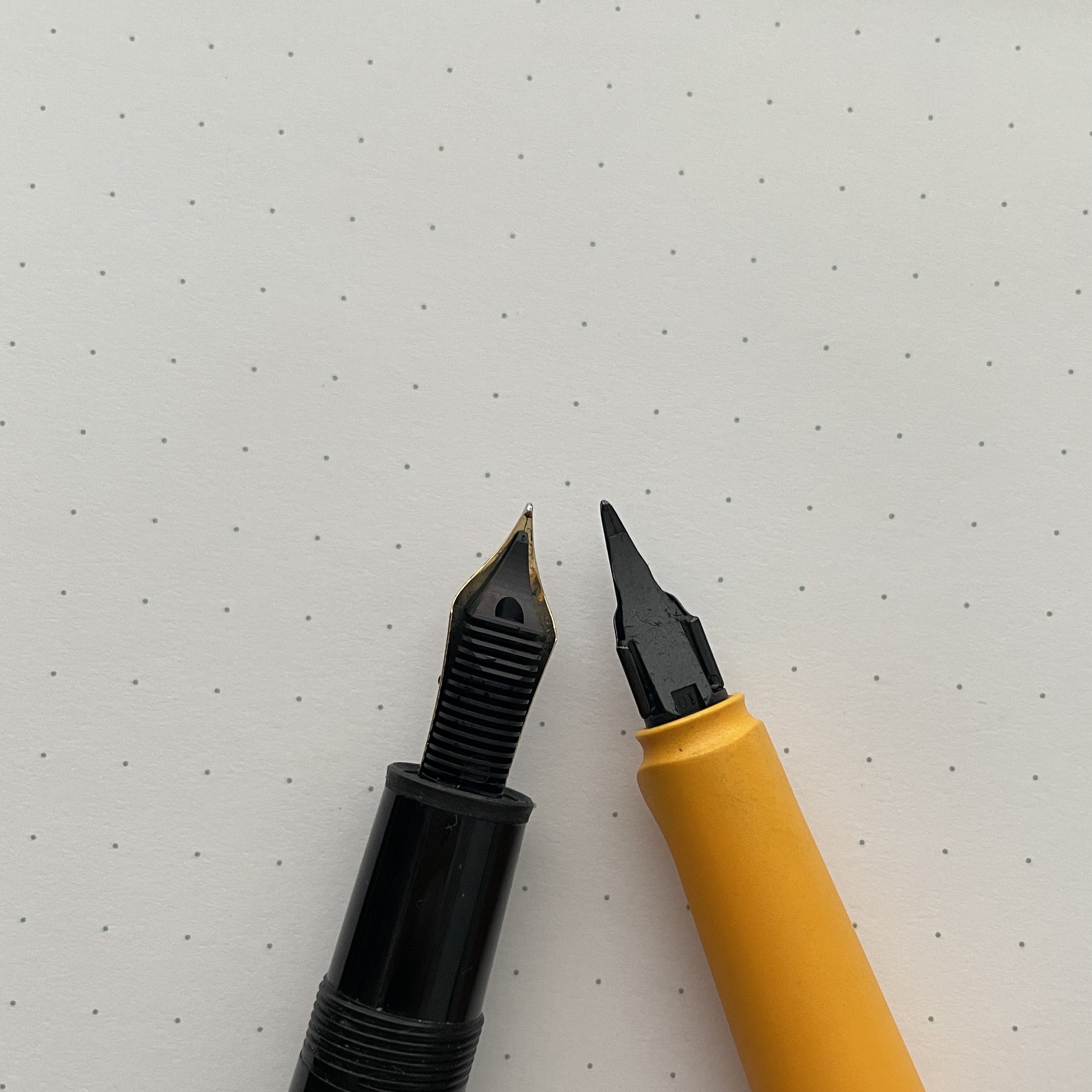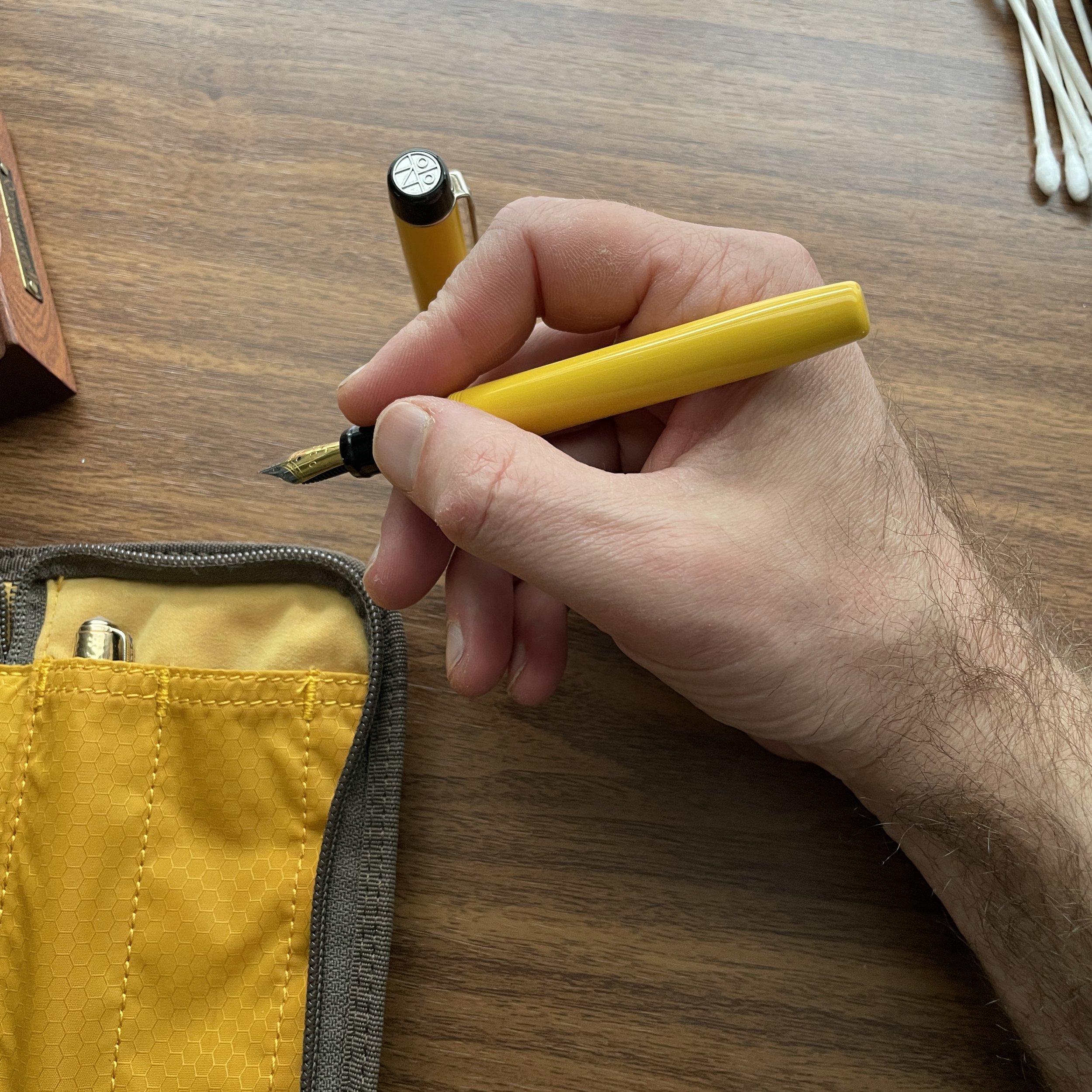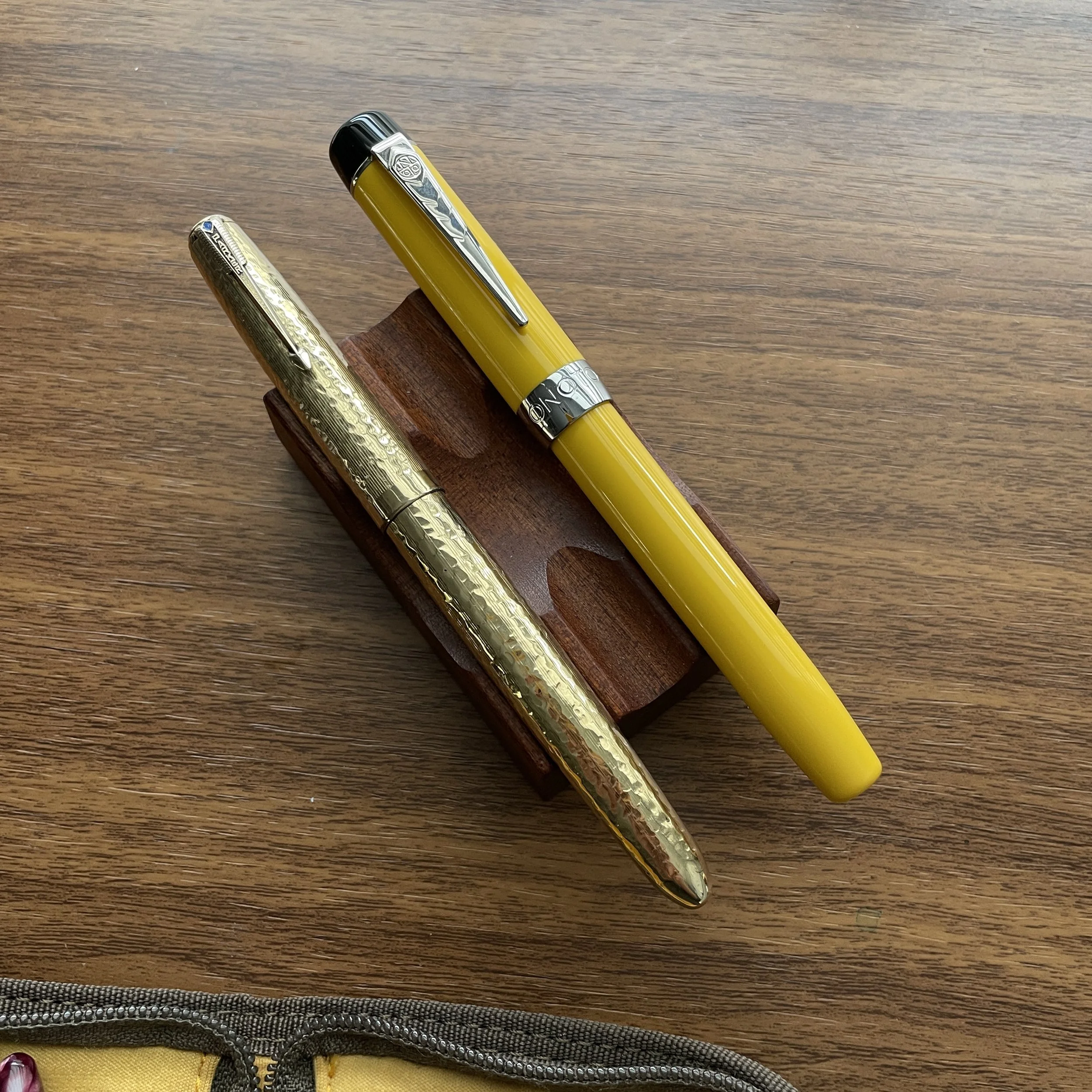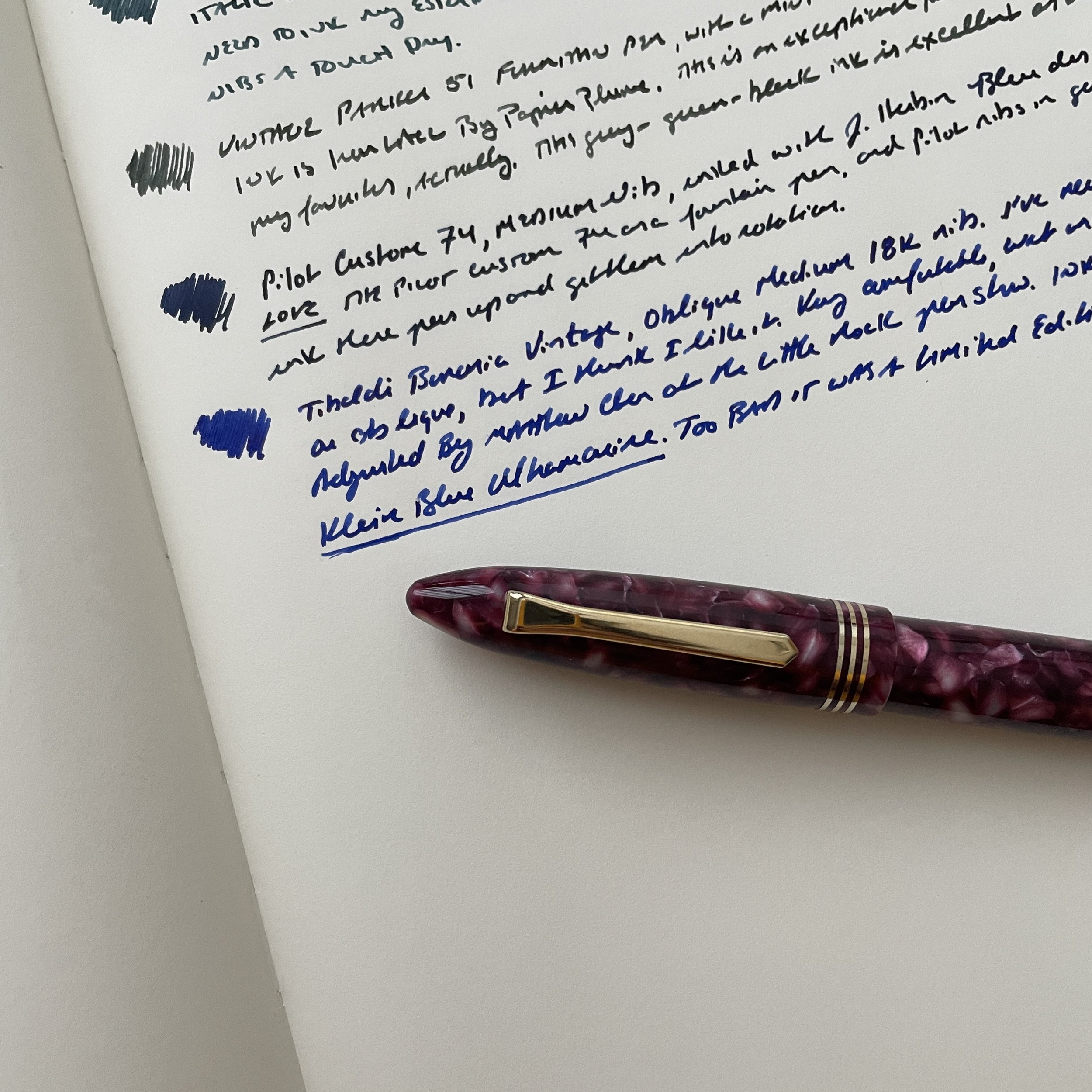While I personally think the Caran d’Ache 849 “Goliath” refill that ships with every Caran d’Ache 849 ballpoint pen is a smooth, reliable, relatively dark refill that lasts a long time and, at the end of the day, gets the job done just fine, I understand that many of you are left wanting a different option for Caran d’Ache’s iconic click pen. The Goliath, however, is a proprietary refill with a slightly odd shape that makes it tricky to replace. Over the past few weeks, I’ve experimented and come away with three alternatives that work reasonably well.
Note: The hacks discussed below are just that, “hacks,” and not in any way a modification authorized by the manufacturer. While I’d personally consider the risk extremely low - especially with a ballpoint - if you break any pen by modifying the mechanism or using a non-standard refill, you will likely void your warranty. The same goes for modifying or grinding fountain pen nibs, feeds, etc. Proceed at your own risk!
The Caran d’Ache 849 Rollerball Refill appears to fit most of the 849 ballpoint pens just fine, though if you get a refill that’s slightly too long, you can adjust using Option 2 below.
Option 1: The Caran d’Ache 849 Rollerball Refill
Many people were thrilled to see Caran d’Ache release a larger rollerball pen in the classic 849 profile. The best part about it? The 849 Rollerball uses a Parker-style rollerball refill - and a really good one at that - which comes in both .5mm and .7mm sizes, in black or blue ink. (The 849 Rollerball pen itself ships with a .7mm black rollerball cartridge.) While you can turn the 849 Rollerball into a larger ballpoint using any Parker-style refill, I’ve had very good luck with the inverse - the Caran d’Ache Parker-style rollerball cartridge also appears to fit the standard 849 ballpoint pen without much, if any, modification.
Parker-Style refills such as the Jetstream SXR (in the yellow pen) and the Schmidt P900 (pictured here) can be made to work with a simple trick.
Option 2: The Jetstream SXR (and Most Other Parker-Style Ballpoint Refills)
One of my favorite ballpoint refills of all-time is the Uniball Jetstream SXR - a Parker-style low viscosity ballpoint refill that serves as one of my go-to Parker-style refills when I’m looking for an ultra-fine tip ballpoint that dries quickly. While it took a bit of work to get this particular cartridge to work in the standard Caran d’Ache 849 ballpoint pen, here’s what I did:
Step One: Unscrew the knock at the back of the Caran d’Ache 849 and remove the Goliath refill.
Step Two: Insert the Jetstream SXR (or Schmidt P900 or Easyflow 9000 or other Parker-style ballpoint refill of your choice).
Step Three: Replace the knock and screw it all the way down until you reach the end of the threads. You will likely have one of two issues: (1) when you retract the refill, the tip still extends past the end of the barrel, since the refill is too long; and/or (2) when you try to depress the knock, the refill won’t “catch” and stay in writing mode. To fix both of these problems, I typically unscrew the knock one or two turns, which pulls the tip of the refill back into the barrel without affecting the stability of the knock or causing rattling. (You may have to experiment a bit, depending on the refill you’re working with.)
Note that the tip of this Jetstream SXR refill is slightly too long when the pen is retracted. You can fix this problem by unscrewing the knock one, maybe two, turns to reach your preferred length. I have not found that unscrewing the knock in this way affects the usability of the pen.
Option 3: Ohto “Flash Dry” .5mm Needle-Tip Gel Refill
The third option I plan to discuss requires the most work, though it’s still a pretty easy hack. The Ohto “Flash Dry” refill has garnered a well-deserved reputation as an excellent, relatively fast-drying needle-tip gel option that is compatible with Parker-style ballpoint pens. The problem? It’s too long to fit the standard 849 ballpoint without modification. While you might be able to adjust the refill length using the trick described above (unscrewing the knock), you can also modify the refill by shaving off a bit of the clear plastic tubing using a craft knife or sharp scissors. GO SLOWLY. You only need to shave off .5-1mm, but if you take off too much you can add back length by wrapping a small piece of washi tape around the end of the cartridge. (This one will likely take some experimentation).
The unmodified Ohto Flash-Dry refill (left)
To reduce the length of the refill, pull off the black plastic cap and cut a small sliver off the clear refill tubing. Replace the black plastic cap and the refill should work. If you find that you cut too much (i.e., the tip doesn’t extend all the way through the opening when the knock is depressed), simply wrap a small piece of washi tape around the end of the refill to add back length.
Note that if you don’t want to mess around with hacking the Ohto Flash Dry refill to fit in the Caran d’Ache 849 ballpoint, this refill fits the 849 Rollerball without modification, and also has it’s own Ohto Fast-Dry click-pen, which is inexpensive and which we stock in the shop.
Again, I have to emphasize that although The Gentleman Stationer is an authorized Caran d’Ache retailer, hacks like these are NOT authorized and we obviously can’t guarantee that any modifications will work in all pens, due to slight variations in refill size (and even the various editions of the 849). Proceed at your own (admittedly low) risk, and have fun making your pens work for you!
